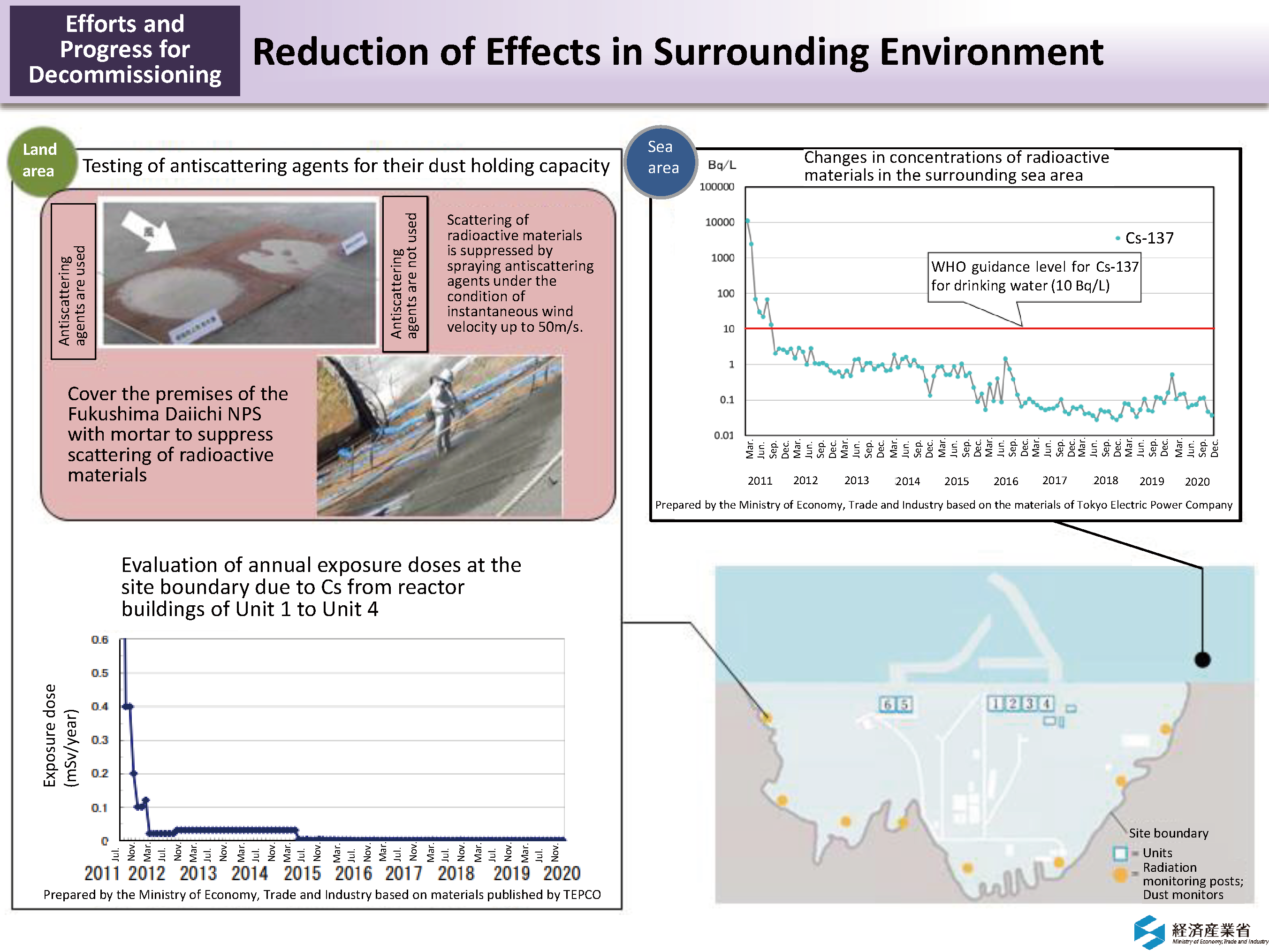Reduction of Effects in Surrounding Environment
During work, not only monitoring of changes in radiation doses at work sites but also monitoring of water and air around the premises of the NPS has been conducted regularly and it has been confirmed that influence on people's lives is sufficiently low. In preparation for any event of an abnormal increase in ambient dose rates or concentrations of radioactive materials in dust, a system for prompt reporting and responses has been put in place.
< Sea area monitoring >
By the sea-side impermeable wall consisting of driven steel piles, which was completed in October 2015, and other various measures (for details, see p.13 of Vol. 2, "Measures against Contaminated Water"), concentrations of radioactive materials in the surrounding sea area were reduced and have maintained levels far below the World Health Organization (WHO)'s guidance level for drinking water quality.
< Surrounding area monitoring >
At Tokyo Electric Power Company (TEPCO)'s Fukushima Daiichi NPS, various measures are taken to prevent scattering of radioactive materials to outside of its premises. Representative measures being taken are spraying of antiscattering agents and covering the ground with mortar. These measures have worked to reduce dose rates, compared with those immediately after the accident, and to stabilize the rates at radiation monitoring posts installed at the boundary of the premises.
- Included in this reference material on February 28, 2018
- Updated on March 31, 2021

